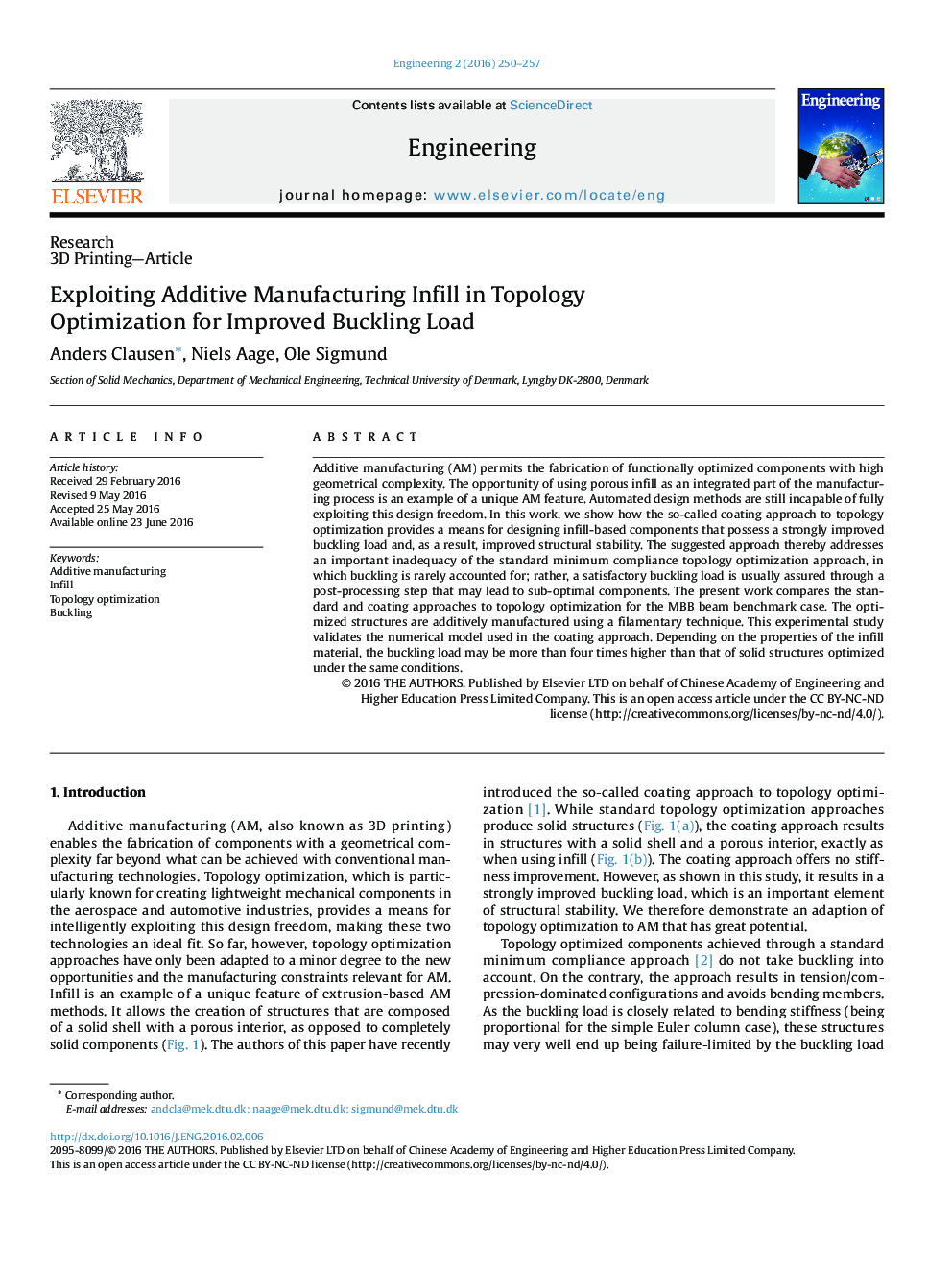| Article ID | Journal | Published Year | Pages | File Type |
|---|---|---|---|---|
| 478812 | Engineering | 2016 | 8 Pages |
ABSTRACTAdditive manufacturing (AM) permits the fabrication of functionally optimized components with high geometrical complexity. The opportunity of using porous infill as an integrated part of the manufacturing process is an example of a unique AM feature. Automated design methods are still incapable of fully exploiting this design freedom. In this work, we show how the so-called coating approach to topology optimization provides a means for designing infill-based components that possess a strongly improved buckling load and, as a result, improved structural stability. The suggested approach thereby addresses an important inadequacy of the standard minimum compliance topology optimization approach, in which buckling is rarely accounted for; rather, a satisfactory buckling load is usually assured through a post-processing step that may lead to sub-optimal components. The present work compares the standard and coating approaches to topology optimization for the MBB beam benchmark case. The optimized structures are additively manufactured using a filamentary technique. This experimental study validates the numerical model used in the coating approach. Depending on the properties of the infill material, the buckling load may be more than four times higher than that of solid structures optimized under the same conditions.
